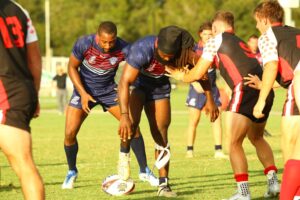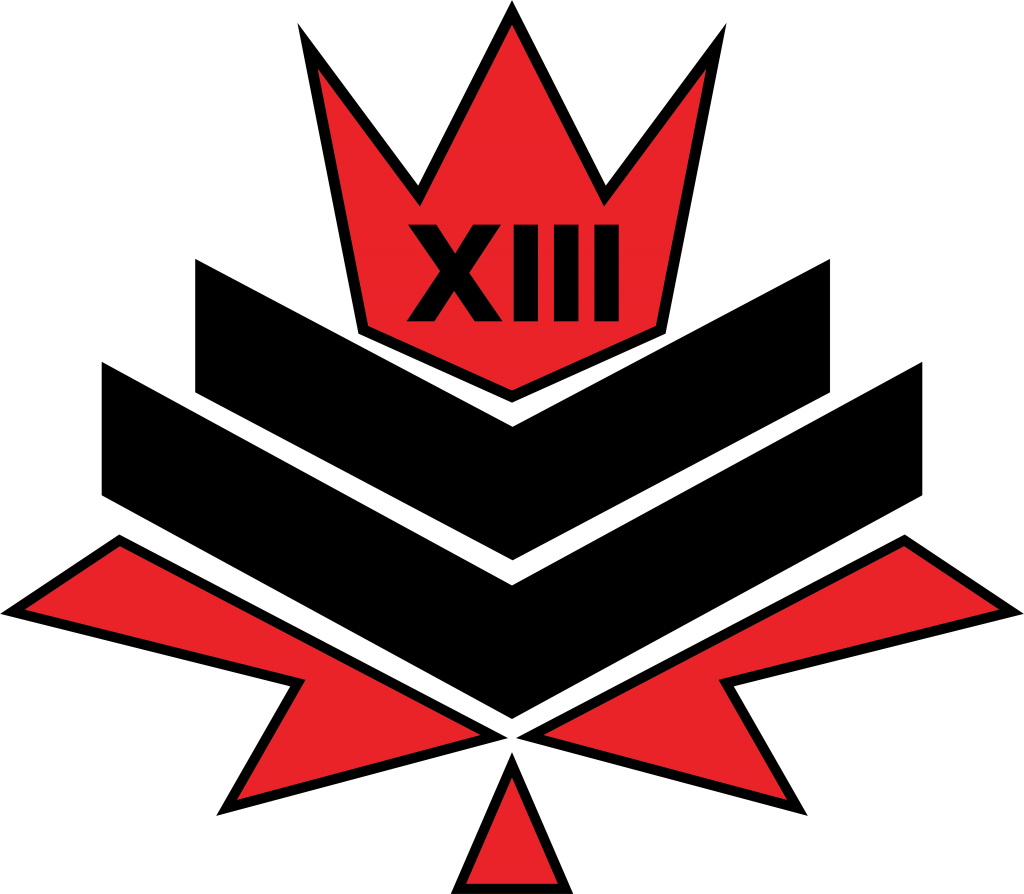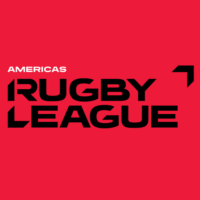
Background:
Usually called Rugby League, is a full contact sport played by two teams of thirteen players on a rectangular field. One of the two codes of rugby football, it originated in England in 1895 as a split from the Rugby Football Union over the issue of payments to players. Its rules gradually changed with the aim of producing a faster, more entertaining game for spectators.
In rugby league, points are scored by carrying the ball and touching it to the ground beyond the opposing team’s goal line; this is called a try, and is the primary method of scoring. The opposing team attempts to stop the attacking side scoring points by tackling the player carrying the ball. In addition to tries, points can be scored by kicking goals. After each try, the scoring team gains a free kick to try at goal with a conversion for further points. Kicks at goal may also be awarded for penalties, and field goals can be attempted at any time.
The Rules of Rugby League:
Rugby League is fast, exciting and spectacular. It’s a game played by powerful athletes who experience over 300 collisions during 80 minutes of play. It’s a game that takes your breath away – literally! Combine the players’ athleticism with ingenious strategies to crack the defences, and you will see why Rugby League is a spectator sport that just can’t be beaten.
Overview
Each team has 13 players, with another 4 to 6 pre-named players available for 12 interchanges throughout the game.
Positions
Backs: Full Back • Right and Left Wing • Right and Left Center • Fly Half • Half Back
Forwards: 2 x Prop • Hooker or Dummy Half • 2 x Second Row • Lock
Interchange Bench: Subs 1 through 6
Checkout the Rugby League International Federation Regulations and Laws
Rules Summary:
SCORING POINTS – A team scores points by scoring TRIES, GOALS, and FIELD-GOALS. The best result is from scoring a TRY. If you can ground the ball over your opponents’ try line you get FOUR POINTS for your team. The try scoring team also gets a chance to add another TWO POINTS by CONVERTING a place kick (a placed kick from the ground) through the field posts and above the crossbar.
STOPPING THE TEAM FROM SCORING – All thirteen opposing players on the field can stop his target getting over their goal-line by tackling him and stopping movement of the ball. A tackle is completed when the ball carrying arm of the player has touched the ground and a tackler is touching him. The defenders must get off the man with the ball as he brings it back into play by a PLAY THE BALL.
PLAY THE BALL – Once a player is grounded or called held by the referee he then will stand up and begin the PLAY THE BALL. This is done by the tackled player placing the ball in front of his foot and then rolling it backwards with one foot to the next receiver on his team. This player who receives is known as the dummy half (similar to a Quarter Back in American Football). The defending team must go back ten meters from the PLAY THE BALL, apart from the two defenders who guard the PLAY THE BALL area with one standing behind the other. They can advance once the ball is rolled back by the foot of the tackled player. If they move early, or don’t get back the full distance, it’s a penalty.
6 PLAY RULE (DOWNS) – A team is allowed to PLAY THE BALL six times to try to score before they surrender possession back to the other team. Most teams don’t like to hand the ball over on the sixth tackle and prefer to kick to gain better field position (similar to the 4 Downs in American Football except they are playing for the full length of the field).
PASSING THE BALL – There is no limit as to how many times the ball is passed from one player to another but at no time can the ball be passed forward or fumbled forward with the ball touching the ground.
KICK AND REGATHER – The attacking team may kick in general play and attempt to regain the ball, only if the players contesting the ball are behind the kicker when it is first kicked.
LOSING POSSESSION – When a player fails to catch a ball cleanly and knocks it forward or is carried over the side line while holding the ball, the end result is a scrum with the opposing team controlling the feed of the scrum into the middle. A team also loses possession when the ball is kicked and rolls over the sideline (into touch).
SCRUMS – Is when the 6 forwards from each side form a triangle, face each other and then pack down and lock heads. The referee will then instruct the Scum Half to release (or feed) the ball into the middle of the scrum where the two packs of forwards push against each other to control the direction and the outcome of the ball.
OTHER SCORING – As well as scoring tries and conversions, you can also score points by kicking a place kick over the cross bar if you are awarded a PENALTY which is worth TWO POINTS. Or, with the ball in play, you can kick a drop-kick through the posts for a FIELD-GOAL to score ONE POINT. This normally happens late in a tightly fought game when both sides are avoiding a tie or draw.
OFFSIDE – If a player is in front of a team-mate who kicks forward, he is offside. He is back onside if the receiver who gets the ball runs ten meters, or the kicker overtakes him.
FOUL PLAY – High tackles (contact with the head) are not allowed, and incur a penalty (a kick for goal or six PLAYS). Stealing the ball from a player when there is more than one person in the tackle also incurs a penalty, as does impeding or blocking a man when he hasn’t got the ball.








